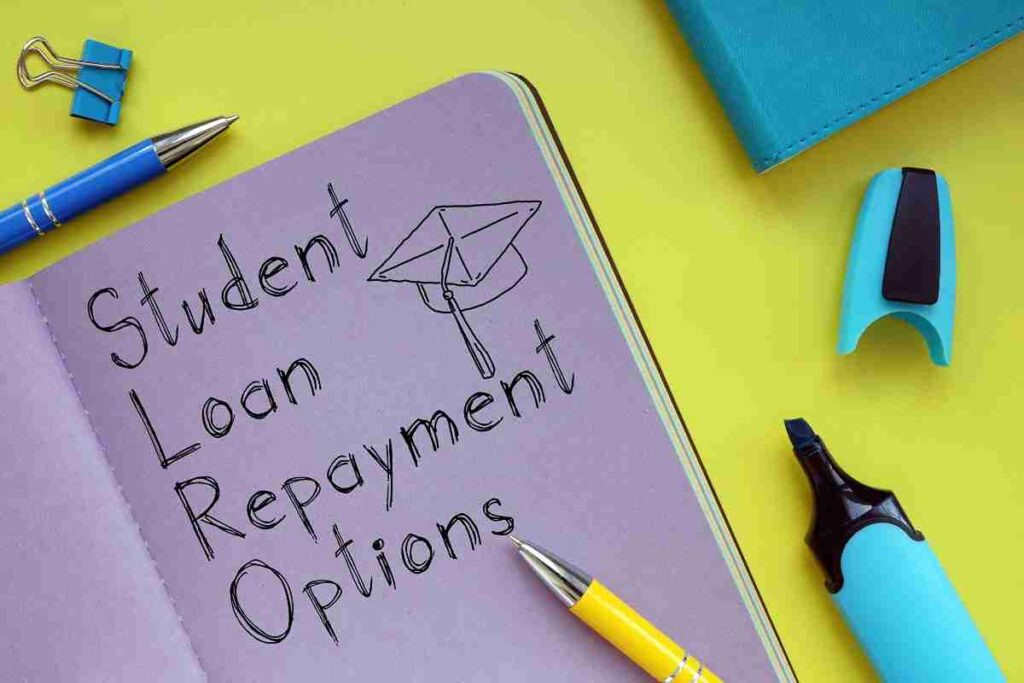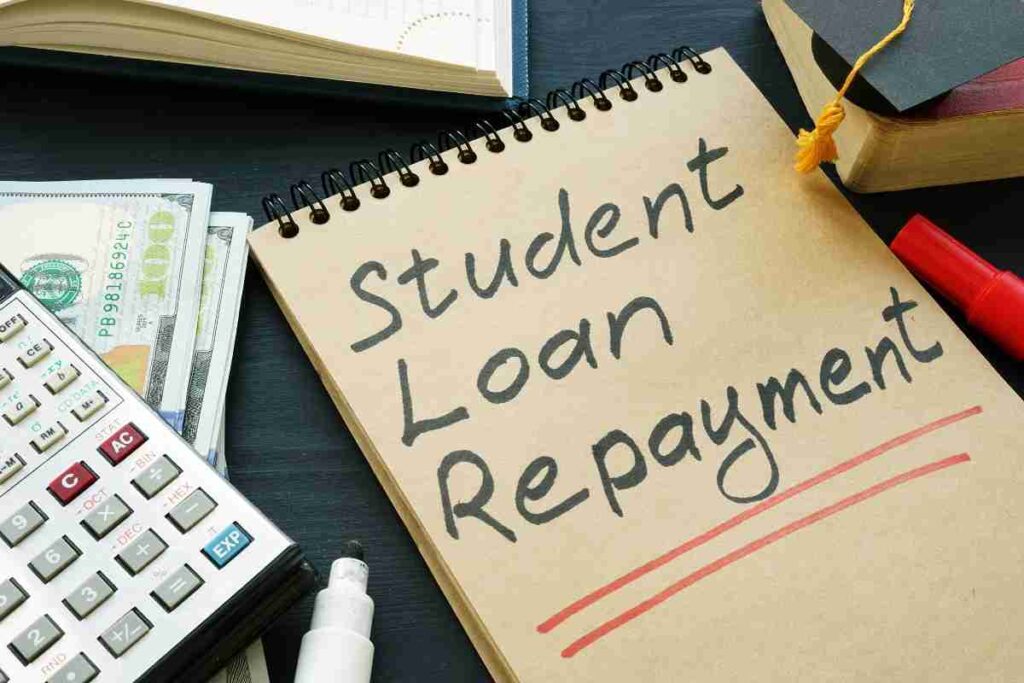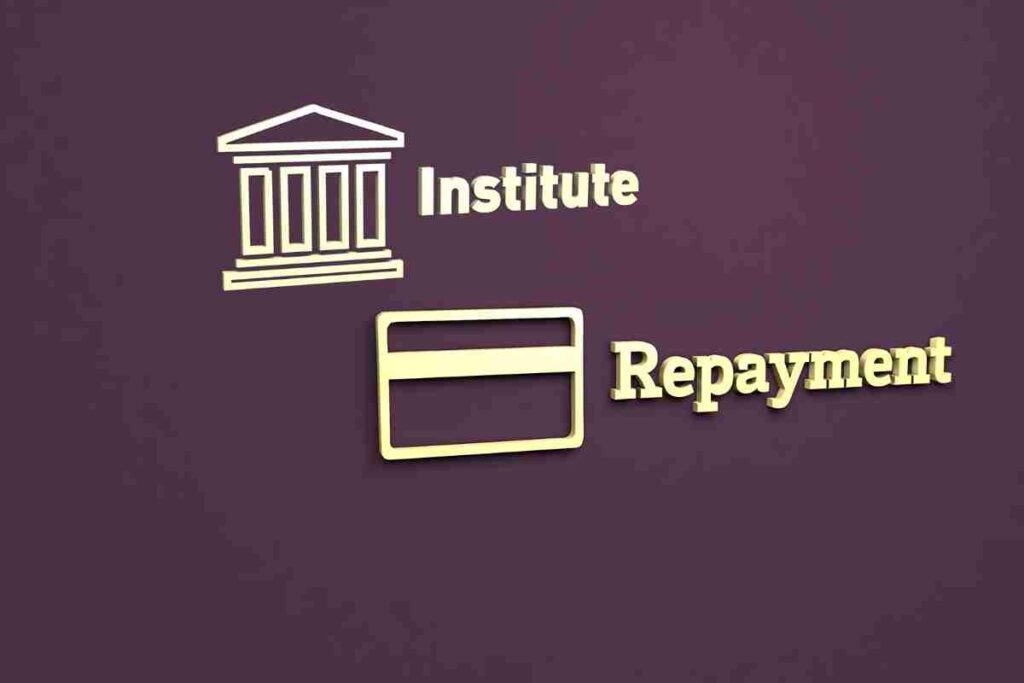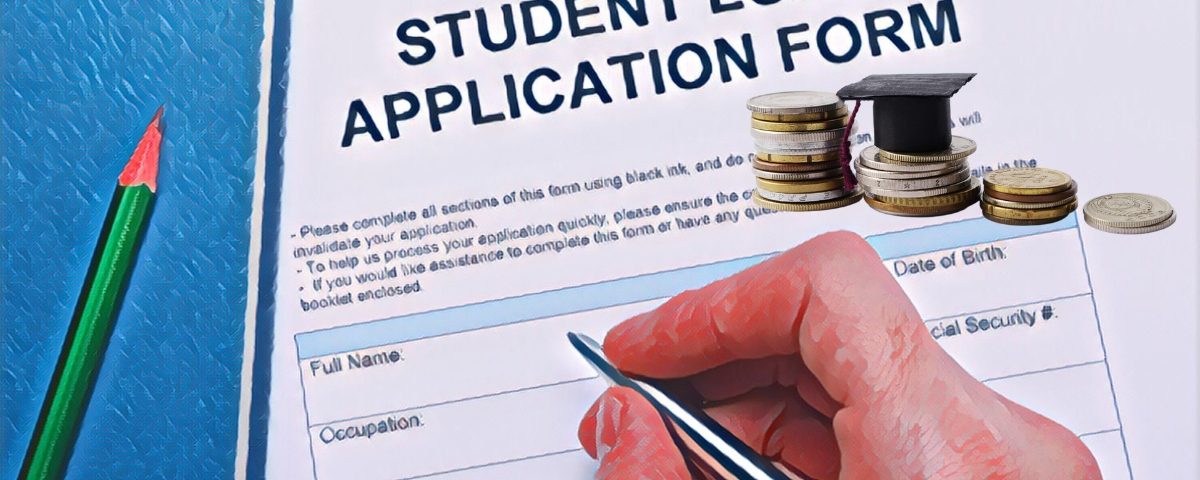
Proven Tricks To Make Coffee For Study Sessions More Powerful
December 17, 2022
Wellness and Lifestyle for College Students: Expectations vs. Reality
December 17, 2022How To Master Education Loan Repayment For A Stress-free Life
Paying off your educational loan might sound daunting at first, but trust me, it’s manageable with the right plan. The key is knowing how repayment works and planning your finances accordingly. Whether you’re just about to graduate or have already received that much-awaited job offer, getting familiar with the repayment process can make a huge difference. In this blog, we will look more into the hassles of education loan repayment.
What is the Moratorium Period?
Think of the moratorium period as a financial grace period — a breather before repayments start kicking in. It’s typically the course duration plus six months but can sometimes be extended up to a year, depending on the lender.
During this time, you don’t have to pay a single rupee towards your loan. Sounds like a relief, right? But here’s something you need to know: the interest keeps building up quietly in the background.
If your loan is interest-free during this period (rare but possible with certain government schemes), you’re in luck. If not, it might be a good idea to start paying the interest, even if it’s a small amount. Trust me, it helps reduce the overall financial burden when the repayment phase officially starts.
Why Should You Care About the Moratorium Period?
Simple — this is your time to prepare. You’ve got a golden window to start budgeting and planning how you’ll tackle your education loan repayment once the clock starts ticking.
Here are a few smart steps you can take:
Start saving from internships: Even if it’s a modest amount, every rupee counts.
Keep track of interest: Check with your lender to understand how interest accumulates.
Build a repayment plan: Calculate how much you’ll need to repay monthly once the moratorium ends.
This way, you won’t be caught off guard, and you’ll develop healthy financial habits right from the start.
Repayment Options During the Study Period

Handling an education loan may seem overwhelming, especially when you’re juggling assignments, exams, and career plans. But here’s some good news: many lenders offer repayment options during your study period to help you manage your finances better.
What Are the Options?
Some banks and financial institutions let you choose from different repayment methods even while you’re still studying. These typically include:
Paying only the interest: You can opt to pay just the interest during the study period. This keeps the principal amount untouched but prevents the interest from piling up and adding to your total repayment.
Making partial payments: If you’ve got some savings from internships or financial support from family, consider making small, partial payments. It reduces both the interest and the future EMI amount.
Full payments (if possible): Though rare for students, paying both the interest and principal during this time gives you a major head start on clearing your loan faster.
Why Choose These Options?
Education loans accrue interest over time, and delaying payments until the end of your study period can significantly increase the total amount owed. By opting for interest or partial payments, you’re keeping your future burden lighter and more manageable.
How Do You Decide What Works for You?
Talk openly with your lender about your financial situation and repayment preferences. Ask about the impact each option will have on the total loan amount. This conversation helps you choose a repayment strategy that works best for you without stretching your resources too thin. Using an education loan EMI calculator can also help you understand the impact of different repayment options on your monthly budget.
Pro Tip
If you’re earning anything from freelancing, part-time work, or internships, use a portion of that income to make these payments. It builds financial discipline and sets you up for responsible money management in the future.
Choosing the Right Repayment Plan

Managing your education loan repayment doesn’t have to be stressful. The key is finding the repayment plan that works best for your financial situation and future goals. One smart strategy is to consider opting for a shorter loan tenure.
Why Choose a Shorter Loan Tenure?
A shorter loan tenure may seem intimidating at first because it comes with higher monthly payments. But here’s the upside — you end up saving a lot on interest and clear your loan faster. Imagine the sense of relief when you’re debt-free sooner than expected. That freedom can open up opportunities to invest, save, or even pursue further education without financial baggage.
Things to Keep in Mind
Before you commit to a shorter loan tenure, think carefully about your current and future earning potential. Can you handle higher EMIs without compromising your basic living expenses? If the answer is yes, it’s worth considering. But if the monthly payments feel overwhelming, it’s okay to opt for a longer tenure and manage the repayment at a comfortable pace.
Use a Loan EMI Calculator
An education loan EMI calculator is a simple yet powerful tool to help you figure out the perfect loan tenure. Just enter your loan amount, interest rate, and preferred tenure, and the calculator will show your monthly repayment amount. Play around with the numbers until you find a balance that fits your budget.
Pro Tip
If you receive bonuses or unexpected windfalls, consider making lump sum payments towards your loan. This can help you reduce both the interest and the tenure, even if you’ve chosen a longer repayment period initially.
Repayment Plan Types

When it comes to education loan repayment, you have several repayment plan options to choose from. The right one depends on your financial situation and future goals. Let’s break down the different types so you can make an informed decision.
Fixed Interest Rate
With a fixed interest rate plan, your monthly payments remain the same throughout the loan tenure. This option offers stability and makes it easier to plan your finances since the EMI (Equated Monthly Installment) stays consistent. If you prefer predictability, this is a solid choice.
Floating Interest Rate
A floating interest rate plan means your interest rate can go up or down based on market conditions. While this may sound risky, it can actually work in your favor if interest rates drop. However, be prepared for fluctuations in your monthly payments.
Flexible Repayment Options
Some lenders offer flexible repayment options tailored to your financial needs. These could include lower EMIs in the initial years or a step-up repayment plan where payments gradually increase as your earning potential grows. These plans can be a lifesaver if you’re just starting your career.
How to Choose the Best Plan

Think about your current income, expected future earnings, and how comfortable you are with financial risks. If you’re someone who likes stability, a fixed interest rate might be your best bet. But if you’re okay with taking a chance for potential savings, a floating rate could work well.
Read the Fine Print
Before finalizing your repayment plan, take the time to read and understand the terms and conditions. Look for any hidden charges or penalties for early repayment. Don’t hesitate to ask questions if something isn’t clear — your financial future is worth the extra effort.
Managing Debt
Paying off an education loan might feel overwhelming, but managing your debt wisely can make the journey smoother. One simple yet powerful strategy is setting up automatic payments.
Why Automatic Payments Matter
Life gets busy, and it’s easy to forget payment due dates. By setting up automatic payments, you never have to worry about missing a deadline. This not only keeps you on track but also helps avoid late fees and penalties. Some lenders even offer a small interest rate discount if you opt for auto-pay, making it a win-win situation.
How to Set It Up
Getting started is easy. Most lenders allow you to set up automatic payments through their website or mobile app. You’ll typically need to provide your bank account details and choose a payment date that works best for you.
Tips to Ensure Smooth Payments
Before setting up auto-pay, double-check that your bank account has enough funds to cover the payment each month. Bounced payments can lead to unnecessary charges and a bad mark on your repayment history. To stay safe, consider setting a reminder a few days before your payment date to ensure your account is ready.
Stay in Control
Even with automatic payments, it’s important to monitor your repayment progress. Check your loan statements regularly to make sure payments are being processed correctly. Keeping an eye on your finances will help you stay confident and in control of your repayment journey.
Tax Benefits and Loan Repayment

Paying off an education loan can feel like a big task, but here’s some good news — you can actually save money while repaying it. How? By making the most of the tax benefits available to borrowers.
Utilise Tax Benefits Wisely
Once you land a job and begin your education loan repayment, you become eligible for tax deductions on the interest portion of the loan. This can significantly reduce your tax liability and leave more money in your pocket for other expenses.
What Section 80E Offers
Under Section 80E of the Income Tax Act, you can claim a deduction on the interest paid towards the education loan. The best part? There’s no cap on the amount you can claim. As long as it’s interest paid on your education loan, it qualifies.
How Long Can You Claim?
You can claim this deduction for up to 8 years or until your loan is fully repaid — whichever comes first. So, the sooner you start paying off your loan, the longer you can enjoy the tax benefits.
Tips to Maximise Savings
Keep a record of your interest payment certificates provided by your lender each year. These are essential for claiming the deduction when filing your tax return. Also, ensure that the loan is taken from a recognised financial institution or bank to qualify for this benefit.
Make the Most of Every Rupee
By claiming these tax benefits, you’re effectively reducing the financial burden of your education loan repayment. It’s a smart way to manage your finances while staying responsible for your commitments.
Refinancing and Loan Repayment

When it comes to education loan repayment, knowing your options can make a world of difference. Whether you’re dealing with a government bank or a Non-Banking Financial Company (NBFC), each institution has its pros and cons. Understanding these can help you choose the repayment path that works best for your financial situation.
Government Banks
Government banks often stand out for their borrower-friendly policies. They usually offer flexible repayment options, which can be a lifesaver if you’re just starting your career. Many also provide a grace period before repayments kick in, giving you some breathing room to settle into your new job.
The interest rates at government banks are typically lower, making them a more affordable option in the long run. If you’re someone who values stability and flexibility, government banks might be your best bet.
NBFCs
If speed and efficiency are what you’re after, NBFCs could be a great choice. They tend to have faster loan processing times, which can come in handy when you need funds quickly. NBFCs are often more willing to take on borrowers who might not meet the strict eligibility criteria of government banks.
However, keep in mind that these conveniences sometimes come at the cost of higher interest rates. It’s essential to do the math and see if the faster processing is worth the additional expense over time.
Making an Informed Decision
Before settling on an institution, read the fine print carefully. Pay close attention to the repayment terms, interest rates, and any hidden fees. Don’t hesitate to ask questions if something isn’t clear—it’s your financial future at stake, after all.
Common Mistakes to Avoid in Education Loan Repayment

Paying back your education loan might seem overwhelming, but with the right approach, you can tackle it confidently. A few smart choices can make the entire repayment journey smoother. Here are some common mistakes to steer clear of and tips to help you stay on track.
Missing Payments or Defaulting
This is one of the biggest pitfalls to avoid. Missing a payment not only affects your credit score but can also lead to hefty penalties. Life can be unpredictable, but setting reminders for due dates or automating your payments can help ensure you don’t miss a single EMI.
If you ever face financial difficulties, reach out to your lender immediately. Most institutions are willing to offer temporary solutions like a payment pause or restructuring your repayment plan.
Taking Unnecessary Loans
It’s tempting to take multiple loans for various expenses, but stacking up debt can quickly become overwhelming. Keep your borrowing to a minimum and focus on clearing your education loan first. Avoid unnecessary credit card debt and personal loans until your student loan is under control.
Not Planning Monthly Payments
Flying blind when it comes to EMIs is a recipe for financial chaos. Use an EMI calculator to figure out your monthly payments and ensure they fit into your budget. This tool helps you visualize how much you need to set aside each month, making financial planning a lot easier.
Proactive Repayment Planning
If you can afford it, consider making prepayments or increasing your EMI amount whenever you receive bonuses or windfalls. This can help you save on interest in the long run and get debt-free faster.
Conclusion
Repaying an education loan might seem like a long and winding journey, but with the right approach, it’s absolutely manageable. A little careful planning and smart management can make all the difference.
First things first — make sure you understand your loan terms thoroughly. Know your interest rates, repayment tenure, and any hidden charges that might catch you off guard. If you’re ever unsure, don’t hesitate to reach out to your lender for clarity.
Choosing the right repayment plan is equally crucial. Whether it’s a standard EMI plan or a flexible income-based option, pick one that fits your financial situation. If your income changes over time, you can always explore refinancing or renegotiating terms with your lender.
Effective debt management is key to keeping stress at bay. Stick to a monthly budget and prioritize your loan repayment. Set reminders or automate your payments so you never miss a due date. And here’s a pro tip — if you come across extra funds, like a bonus or freelance earnings, consider putting that toward your loan. It can help you save on interest and shorten your repayment period.
Most importantly, stay consistent and patient. Every EMI you pay is a step closer to being debt-free. Financial freedom may seem far off, but with discipline and determination, you’ll get there.




